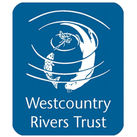
The fleet is still counting their losses out at sea with about 200-300 crab and lobster pots missing and others “tangled and rolled up into a giant ball.” All along the harbour wall, each boat has a tale to tell of the storms. John Balls who runs a potting boat from Clovelly harbour described the force of the sea “smashing pots and rolling them together like a bunch of grapes.” When he was able to get out (the sea piled up a load of shingle partly blocking Clovelly harbour) he searched for his pots, ‘grappling’ with a giant hook on a long pole, to salvage them from the sea bed. He lost 25% and when Boats Stories found him he was in his shed “mending and making new pots.” There was pressure on the fishermen to get out in the lull between the storms but it wasn’t that simple because the fishing grounds were affected by the constant pounding. I met one young fisherman in Appledore who had just come ashore from several days on a trawler which came home “practically empty.” Fishing crew are on a percentage of the catch and a percentage of nothing is nothing!
“So what was it like during the storms for the fish?” I asked the fishermen. “You know when you walk barefoot on the beach, sometimes the falling tide has sculpted hard ripples in the sand,” Bideford based, trawler owner Dick Talbot, explained patiently. “Now imagine those sand ripples rising over 70 feet high into giant sand banks, that’s what much of the seabed is like out in the Bristol Channel.” Dispersed amongst these giant sand waves or hugging the coastline are patches of gravel or mud and weed. And then imagine as Scott said “a washing machine constantly churning everything round and round.” Add in the mud and silt which came down the rivers, as if you are adding laundry liquid through the dispenser and you create an entire water layer full of silt, sand and weed. Some predatory fish which rely on sight may have headed further out to sea. Geoff Huelin who runs a potting boat from Ilfracombe thought that lobsters might have trundled slowly into deeper water, whereas “crabs or whelks would bury in deep to sit out the worst.” I realised it was perverse to continually ask people who’d earned nothing all winter what it was like for the fish. “I reckon fish in the Bristol Channel are used to wild tides and stormy seas – if they didn’t like it rough they’d be living elsewhere,” one salty dog, who’d spent nearly seventy years, facing the waves off the North Devon coast, twinkled at me.
Happily during the last weeks of calmer weather, the tide has begun to turn. The boats are finding fish. Boat Stories was out researching films in Appledore and took this picture (above) of the Sparkling Star heading to the fish dock to unload her catch. In Ilfracombe even as I write, the boats have risen on the water and the Olivia Belle is preparing to cast her moorings and head out to sea. Meanwhile
Scott said it could take his business three or four months to recover and others fared far worse. So now is the time to buy fish and support your local fishing industry. Geoff will be shooting his first pots tomorrow, planning to have lobsters and crabs ready for Easter. S & P wet fish shop and cafe, just across the harbour from where I’m sitting, plans to open tomorrow: April 1st for business. Head to Ilfracombe to watch the boats rise or fall gently with the tide, or the harbour at work, while you eat a crab sandwich, at the licensed café, out in the sunshine.
A big thank you to all those fishermen and women who took time to speak to Boat Stories while they were trying to get their businesses back on track after the storms. See our fish page for a list of suppliers selling locally landed fish and seafood. We will be adding to it and talking about different types of sustainable fishing, seasonal fish and the fishing grounds our local fishermen voluntarily protect as the project progresses.
Jo Stewart-Smith March 31st 2014

 RSS Feed
RSS Feed











